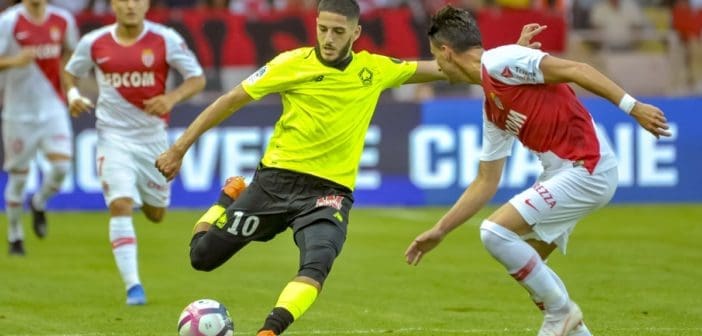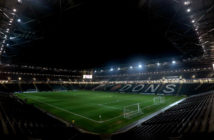Lille surprised many by finishing second in Ligue 1 last season. Now they look to rebuild after selling many of their key pieces and look at how they went about it.
On May 24, 2017, LOSC signed Marcelo Bielsa to be it’s new manager in what was supposed to be a turning point for the club. There is a fine line between genius and madness, and the Argentine is known for constantly walking that tightrope.
Newspapers reported that Bielsa had discussed leaving before the season even began, and his tenure there only lasted thirteen games before being replaced first by an odd four man collection of coaches and then finally by current manager Christophe Galtier.
The lasting impact of the brief Bielsa era at Lille was seen this past off-season, when his signings Nicolas Pepe and Thiago Mendes left the club for a combined £80 million in profit. In all, five players left the side that surprisingly earned second place in Ligue 1 last season, requiring the club to immediately rebuild. Fortunately for the club, the architect of this great success was not a tortured genius from Argentina, but rather Luis Campo, the man who also built the Mbappe/Falcao Monaco team that stunned everyone by winning the French top division and nearly making it to a Champions League Final.
For those paying attention, Luis Campo is no secret, he left Monaco just as they were selling all the stars from their legendary campaign and without him there to rebuild they were nearly relegated last term. Retaining Campo’s services is how LOSC intend to avoid that fate despite a huge summer of their own sales, and rather than rehashing Campo’s story, I would like to look at exactly how he has reconstructed this Lille side.
Before their first game of the season (a 2-1 win over Nantes) Lille had spent transfer fees on nine players (according to ‘Transfermarkt’). The biggest chore of course was going to be finding a replacement for Pepe, who provided 22 goals and 11 assists in the league last term.
Fortunately, Pepe’s outputs were a bit inflated. Nine of his goals came from the penalty spot and he performed pretty much level with his non-penalty expected goals numbers (per ‘understat.com’). So basically what Campo did is he got a Premier League club (Arsenal) to pay an incredibly high fee for a player who’s non penalty numbers were 13 goals, 10 assists in over 3000 minutes in a league that is a distant fifth best in the world. Not saying Pepe is a bad player, just saying he is not as hard to replace as we might otherwise believe.
Nicolas Pepe, Lille 18-19.
Radar, Shot Map, Passing Sonar, Final 3rd Entries. pic.twitter.com/IxGDXa1Dxw
— StatsBomb (@StatsBomb) July 27, 2019
A similar coup happened with young Rafael Leao. Moving to Lille on a free transfer after getting virtually no playing time at Sporting CP as a teenager, Leao played 1300 league minutes last year, outperformed his ‘expected goals’ by three, and one year later was sold to AC Milan for £23 million.
Campo went about replacing these forwards with a committee approach. For chance creation, he signed 22-year-old Yusuf Yazici from Trabzonspor, for goals he signed 20-year-old American Timothy Weah from PSG and 20-year old Victor Osimhen from RSC Chareloi in the Belgian top tier. Osimhen had two goals in his debut against Nantes. The strategy was to sign young players whose value should only go up and to do so by committee so that no one guy is expected to carry the load himself.
Looking forward, these are all players who could be future profits for the club. I mentioned the fact that Weah is an American because of what we just saw with Christian Pulisic to Chelsea. As the English Premier League continues to expand in the American market, recognisable names like Pulisic and Weah will have more value to those clubs than their production justifies.
Pulisic only played 916 league minutes for Dortmund last year and a top six PL club made him their record signing. If Campo can pull off something similar with Weah, he already has his next round of young talent paid for.
"What actual filth!"
Victor Osimhen's second @LOSC_EN goal is ?. The patience to keep Nantes CBs busy contrasted the explosiveness he served when the ball finally dropped for him! pic.twitter.com/y2GJDZrvLP
— Tolu Olasoji (@Tollexrism) August 11, 2019
Campo’s real value, however, is not just in finding young talents that he can sell for big profits later. Every team needs experience and stability as well. So when it came time to replace Thiago Mendes, he opted for Ligue 1 veteran Benjamin Andre. Andre has over 20,000 minutes in Ligue One and knows the league inside and out. At 29-years-old he was not brought in to make a profit, he was added to give the midfield stability over the next few years as other pieces rotate in and out.
Andre’s addition also allowed Campo to take a flyer on a young defensive midfield talent. Manual Cafumana, who goes by “Show” is a 20-year-old player bought out of his native Angola top flight. Given the amount of money LOSC has made this past summer, buys like this are relatively low risk gambles.
It remains to be seen if all these moves will pan out. What we do know is that Lille and Campo were able to address all the holes created by their sales at a fraction of the cost and certainly in their opening match of the season looked like they have no concerns for a Monaco style collapse.
In an age of super clubs and monetary elite in the football world, LOSC find themselves seeking to emulate teams like Sevilla in Spain or Ajax in the Netherlands as teams who understood that their best players would be poached but could survive and thrive anyway.
This self awareness as an organisation, combined with the brilliance of Luis Campo, makes me very optimistic for their foreseeable future, and if you are looking to get in on the ground floor of future big names in the transfer market I suggest you start with this team from northern France.
![Prost International [PINT]](https://prostinternational.com/wp-content/uploads/2021/08/PINTtFontLogoRoboto1536x78.jpg)



